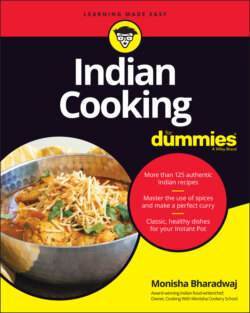Читать книгу Indian Cooking For Dummies - Monisha Bharadwaj - Страница 13
How spices traveled outside India
ОглавлениеEarly Europeans imported spices from India to use in food and incense. Around 2,500 years ago, the Arabs controlled the trade. Spices could change hands a dozen times between their source and Europe, soaring in value with each transaction, and the Arabs were the greatest of the middlemen. Eager to keep it that way, they did everything possible to confuse consumers about the origins, some stories claiming that spices grew on remote mountains in Arabia!
Pepper was prized and there was even a Guild of Pepperers in London, the records of which date back to 1180. They bought and sold spices and also controlled the quality. Things changed in the 15th century when the Portuguese explorer Vasco da Gama discovered the route to India by navigating around the Cape of Good Hope. Direct trade routes between Europe and the East opened, and spices such as cinnamon, pepper, and cloves became more commonplace in Western markets.
Later, when the British started the East India Company, its officers began sending Indian recipes in letters back home. Slowly, suburban English housewives began to cook curries in their homes. There was of course, a lack of authentic ingredients and cookware: Tender green mangoes were replaced with tart English apples, and curries that were traditionally thickened with onion paste began to be made with a roux of flour and butter. Basically, they started to make a curry and ended up with apple pie.
To compensate for the lack of all the necessary spices, a convenient mix was created and became known as curry powder. Even today, curry powder is a generic blend that doesn’t even hint at the complexity and variety of India’s cooking.
No self-respecting Indian cook uses curry powder. Instead, there are subtle regional spices blends in every part of the country that make each cuisine distinct.
Soon small Indian restaurants began to be seen in London, and in the last century, Indian sailors who had fled British ships due to terrible working conditions opened Indian takeout restaurants in the East End. Catering mainly to late pub-goers, they created a simplistic curry menu based on pungency. A fiery hot curry was vindaloo (actually a Goan–Portuguese curry), a Madras was medium (you can’t find a Madras curry in India, let alone an area called Madras), and a korma was mild (a chile korma can be super spicy in India). Along the way, the popular curry known as chicken tikka masala was invented and caught the fancy of the British public; today it’s one of the highest-selling ready meals.
Menus based on heat levels have thrived until present day, and people who have only eaten restaurant food believe it to be the real thing. In this book, I hope to show you how diverse Indian cooking really is and that heat is just one of the things to consider when creating your meal.
